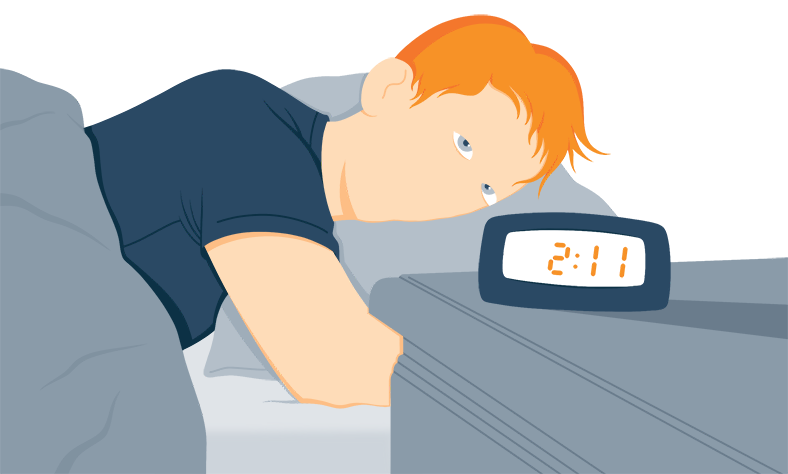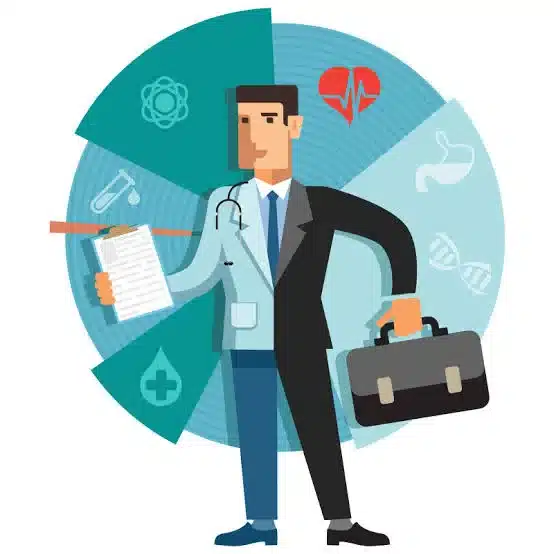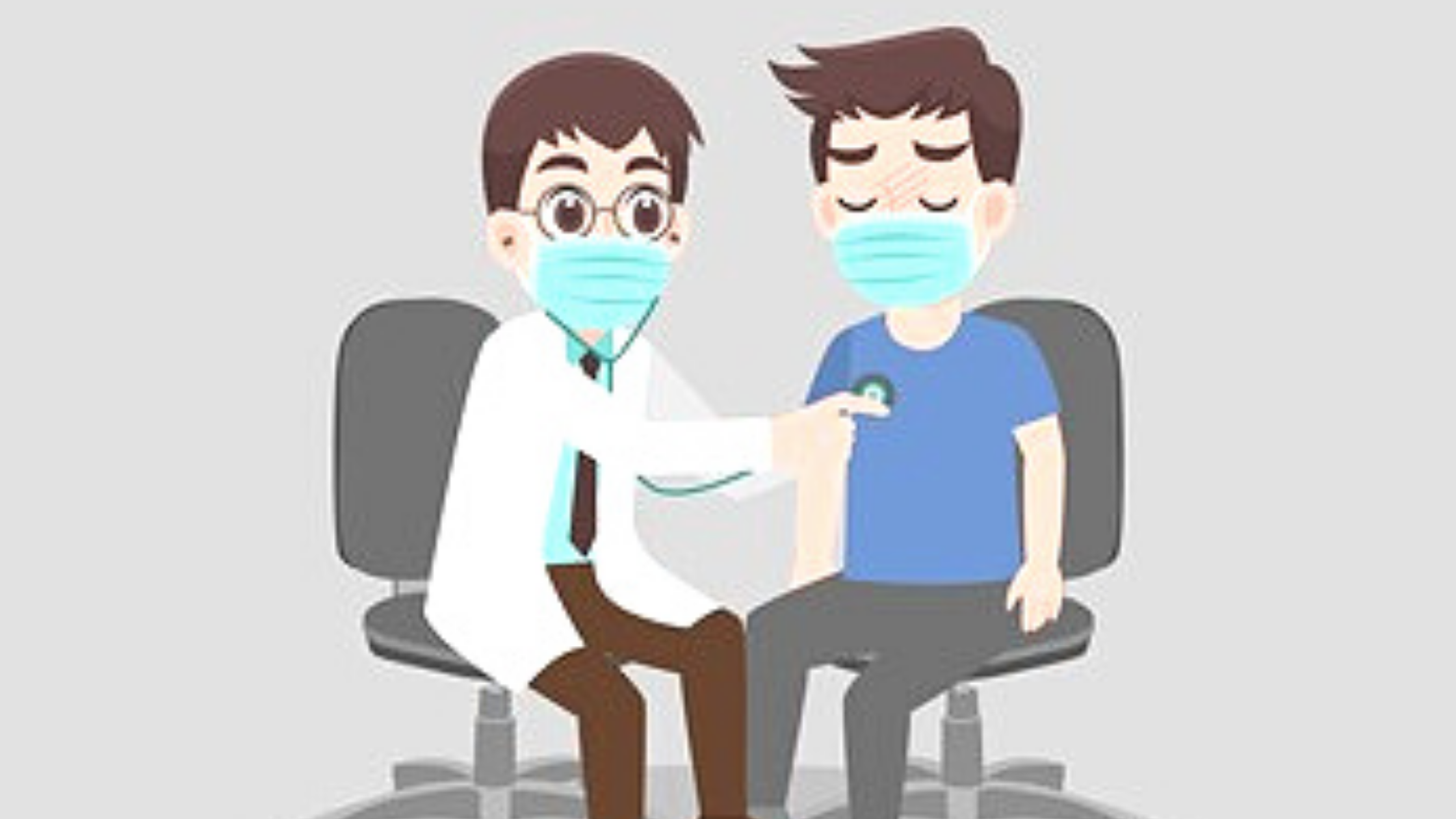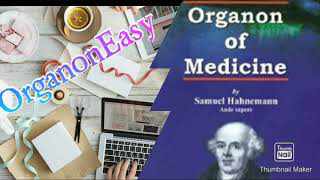Insomnia and its Homoeopathic Treatment and Management
Sleep is a complex biological process. It is a reversible state of unconsciousness in which there are reduced metabolism and motor. 1
There are two different kinds of sleep: (Fig.1&2) 2
1. Rapid eye movement (REM) sleep &
2. Non-REM (NREM) sleep.
Most young adults first enter NREM sleep from the drowsy state. NREM sleep (dreamless sleep) is further divided into three stages (previous guidelines included 4 stages, however, stages 3 and 4 are now subsumed under stage 3). 3
-
The first stage N1 is the lightest stage, characterized by a transition from wakefulness to sleep. Stage 1 non-REM sleep is the changeover from wakefulness to sleep. During this short period (lasting several minutes) of relatively light sleep,heartbeat, breathing, and eye movements slow, and muscles relax with occasional twitches. Brain waves begin to slow from their daytime wakefulness patterns.
-
The second stage N2 follows, which comprises the largest percentage of total sleep.Heartbeat and breathing slow, and muscles relax even further. Body temperature drops and eye movements stop. Brain wave activity slows but is marked by brief bursts of electrical activity. A person spends more of his repeated sleep cycles in stage 2 sleep than in other sleep stages.
-
Then, the adult enters into deep stages of sleep N3 (N3/N4).This stage of sleep is the period of deep sleep that one needs to feel refreshed in the morning. It occurs in longer periods during the first half of the night. Heartbeat and breathing slow to their lowest levels during sleep. Muscles are relaxed and it may be difficult to awake from this stage.
After about 70 to 80 minutes of a deep sleep, sleep lightens and REM period follows, which is usually associated with active dreaming and bodily movements.
REM sleep first occurs about 90 minutes of falling asleep.Eyes move rapidly from side to side behind closed eyelids. Mixed frequency brain wave activity becomes closer to that seen in wakefulness. Breathing becomes faster and irregular, and heart rate and blood pressure increase to near waking levels. Most of dreaming occurs during REM sleep, although some can also occur in non-REM sleep.Arm and leg muscles become temporarily paralyzed, which prevents from acting out of dreams. As we age, we sleep less of our time in REM sleep.
This cycle is repeated at intervals of about 90 minutes. Towards morning, there is less stage 3 & 4 sleep and more REM sleep. 4
Fig.1

Fig.2
WHY WE SLEEP?
It is a million dollar question which scientists are still searching an answer for.Sleep remained one of the last great biological mysteries. All of the mighty problem-solving methods in science-genetics, molecular biology, and high-powered digital technology have been unable to unlock the stubborn vault of sleep.
Addressing the question of why we sleep from an evolutionary perspective only compounds the mystery. No matter what vantage point you take, sleep would appear to be the most foolish of biological phenomena. When you are asleep, you cannot gather food. You cannot socialize. You cannot find a mate and reproduce. You cannot nurture or protect your offspring, Worse still, sleep leaves you vulnerable to predation. Sleep is surely one of the most puzzling of all human behaviors
Through progressive researches we have now came to understand that within the brain, sleep enriches a diversity of functions, including our ability to learn, memorize, and make logical decisions and choices. Benevolently servicing our psychological health, sleep recalibrates our emotional brain circuits, allowing us to navigate next-day social and psychological challenges with cool-headed composure.Emerging from this research renaissance is an unequivocal message: sleep is the single most effective thing we can do to reset our brain and body health each day -Mother Nature's best effort yet at contra-death. 5
HOW WE SLEEP?
Two internal biological mechanisms-circadian rhythm and homeostasis-work together to regulate when we are awake and sleep. 6
Circadian rhythms : It directs a wide variety of functions from daily fluctuations in wakefulness to body temperature, metabolism, and the release of hormones. They control our timing of sleep and cause us to be sleepy at night and our tendency to wake in the morning without an alarm. Our body's biological clock, which is based on a roughly 24-hour day, controls most circadian rhythms. Circadian rhythms synchronize with environmental cues (light, temperature) about the actual time of day, but they continue even in the absence of cues. 7 This circadian rhythm is mainly controlled by supra-chiasmatic nucleus in our brain. 7
Sleep-wake homeostasis : It keeps track of our need for sleep. The homeostatic sleep drive reminds the body to sleep after a certain time and regulates sleep intensity. This sleep drive gets stronger every hour we are awake and causes you to sleep longer and more deeply after a period of sleep deprivation.
This is maintained mainly by the levels of two neurochemicals melatonin and adenosine.The longer we're awake, the stronger our need for sleep. Theseneurochemicals accumulate in our brains, we feel more tired until finally, we decide to sleep. 8
An interesting fact is that sleep itself doesn't affect the homeostatic regulation of the sleep drive. Only one sleep stage, the slow-wave sleep (SWS), also called deep sleep, is able to diminish our need for sleep. This is why if we take a short nap during the day, we will go to bed at our usual time that night, but if we take a nap of over 60 minutes, we reach deep sleep. This means that in the evening we will not be as tired because we have 'written off' some of our sleep drive. 9
Fig.3
Circadian rhythm remains undisturbed by external factors and work on it's own. That is why we suffer jet lag while travelling in two different time zones.
Although every human being displays an unyielding twenty-four hour pattern, the respective peak and trough points are strikingly different from one individual to the next. For some people, their peak of wakefulness arrives early in the day, and their sleepiness trough arrives early at night. These are "morning types, and make up about 40 percent of the populace. They prefer to wake at or around dawn, are happy to do so, and function optimally at this time of day. Others are "evening types, and account for approximately 30 percent of the population. They naturally prefer going to bed late and subsequently wake up late the following morning, or even in the afternoon. The remaining 30 percent of people lie somewhere in between morning and evening types, with a slight leaning toward eveningness. 7
We colloquially know these two types of people as "morning larks" and "night owls, respectively. Unlike morning larks, night owls are frequently incapable of falling asleep early at night, no matter how hard they try. It is only in the early-morning hours that owls can drift off. Having not fallen asleep until late, owls of course strongly dislike waking up early. They are unable to function well at this time, one cause of which is that, despite being "awake," their brain remains in a more sleep-like state throughout the early morning. This is especially true of a region called the prefrontal cortex, which sits above the eyes, and can be thought of as the head office of the brain. The prefrontal cortex controls high-level thought and logical reasoning, and helps keep our emotions in check. When a night owl is forced to wake up too early.their prefrontal cortex remains in a disabled, "offline" state. Like a cold engine after an early-morning start, it takes a long time before it warms up to operating temperature, and before that will not function efficiently. 5
An adult's owlness or larkness, also known as their chronotype, is strongly determined by genetics. Sadly, society treats night owls rather unfairly on two counts. First is the label of being lazy, based on a night owl's wont to wake up later in the day, due to the fact that they did not fall asleep until the early morning hours. Others (usually morning larks) will chastise night owls on the erroneous assumption that such preferences are a choice, and if they were not so slovenly, they could easily wake up early. However, night owls are not owls by choice. They are bound to a delayed schedule by unavoidable DNA hardwiring. Although researches are going on and these facts are still inconclusive. 10
The homeostatic sleep drive is easily hampered by Caffeine which is not only prevalent in coffee, certain teas, and many energy drinks, but also foods such as dark chocolate and ice cream, as well as by drugs such as weight-loss pills and pain relievers. Uses of smartphones at bed time have also been said to be associated with hampered homeostatic sleep drive.
Caffeine blocks adenosine from working, while caffeine is being removed by liver from our system, adenosine is kept accumulated once caffeine is cleared adenosine starts its role and we face a condition called “caffeine crash”5where we find it difficult to function and concentrate with a strong sense of sleepiness once again. A phenomena long known to homoeopaths as secondary action. 11
Insomnia
Difficulty in initiating or maintaining sleep. Often the result of general life stressors, but sometimes associated with a true underlying psychiatric disorder. 12
3 main patterns 12
Sleep-onset delay (trouble falling asleep)
Early morning arousal (trouble staying asleep)
Sleep fragmentation (repeated awakenings)
Symptoms:
Yawning and tiredness during the day,
Patient complains of reduced daily functioning
Management and Treatment
Sleep hygiene & lifestyle modifications. 13
-
Be consistent. Go to bed at the same time each night and get up at the same time each morning, including on the weekends
-
Make sure your bedroom is quiet, dark, relaxing, and at a comfortable temperature
-
Remove electronic devices, such as TVs, computers, and smart phones, from the bedroom
Avoid large meals, caffeine, and alcohol before bedtime
-
Get some exercise. Being physically active during the day can help you fall asleep more easily at night.
Homoeopathic Treatment
-
Proper casetaking and prescription according to symptom totality after assessment of accessory circumstances will help
In elderly there is gradual inability to fall asleep due to aging, circadian rhythm moves earlier which requires elderly population to sleep early and wakeup early however due to societal norms they are sleeping late and then find unable to sleep after 3 am, that can be managed with light therapy to reset circadian rhythm like staying in bright light day light for most of the part of day. 14
Elderly males suffers from prostate enlargement which need them to wake up frequently at night to pass water this can be managed with restriction of fluid intake at evening as well as with our medicines for prostate enlargement. 15
Baryta carb is one of the single medicines mentioned in kent repertory for sleeplessness of old people. 16
Psychology referral if patient is amenable to this
Sleep-onset delay (trouble falling asleep)
If we get causation here our prescription will be easy.
Rubrics from Kent's Repertory 16
Sleeplessness after grief - ign, kali.br and Nat.m are mentioned in kent's repertory
Sleeplessness from joy- coffea
Sleeplessness from abuse of tobacco- nux.v
Sleeplessness from abuse of wine- coff, fl.a and Nux.v are mentioned.
Sleeplessness vexation after- Acon, Ars, cham, Kali.p,Nux.v, petr,Staph
Some concomitants are also helpful like
Cannot get asleep or remain asleep unless legs are crossed- Rhod
Sleep better on abdomen- Med, Thyroidinum, Carc, Cal.p, sepia
Full of ideas; quick to act, no sleep on account of this- Coffea
Early morning arousal (trouble staying asleep)&Sleep fragmentation (repeated awakenings)
If we can get causation here that what is troubling the patient staying asleep we will get our medicine. Like some patient will be oversensitive to noise and their sleep breaks easily (exclude accessory circumstances here like living in noisy area)
Here we can think of medicines like Nux.v, Theridion, Opium.etc. 17
SLEEPLESSNESS, noise, from slight 16
: Am-c., asar.,calad., chin., nat-p., nux-v., ol-an., phos., sel.
Waking is a rubric which can be utilized here.16
WAKING, morning, toward :Phel., phos., staph.
daybreak : Lyc., lycps.
1 a.m. : Bor., Kali-c., nat-c., nat-m., nux-v., ph-ac., rat., stront.
2 a.m. : Bapt., benz-ac., caust., ferr., graph., Kali-c. lach., lyc., mez., nat-s., Nit-ac., phys., Ptel., rat., rumx., sars., staph., stront.
2 to 3 a.m. : Mag-c.
2 to 4 a.m. :Berb., Kali-c., merc.
3 a.m. : Ars., bor., carl., chin., coff., glon., graph., kali-c., lil-t., mag-m., mez., nat-m., nicc., Nux-v, pic-ac., plat., sep., Sulph., zing.
3 to 4 a.m. : Bad., bufo., fago., Ind., nat-m., nux-v., sulph.
4 a.m. : Bor., lyc., mur-ac., nat-m., nit-ac., nux-v., phos., plb., ptel., sep., staph., sulph., trom.
5 a.m. : Aloe., con., fago., helon., lyc., lycps., mez., nat-m., nat-p., sulph.
with urging to stool : Sulph., op., Sulph.
midnight, before : Bor., mur-ac., nat-m., phel., puls., sil., tab.
11 p.m. :Chel., cimic., nat-m.
midnight : Agar., camph., chel., cimic., gent-l., merc-c., nat-c., nat-m., nat-p., plat., sil., spong., sulph.
dream, after : Fl-ac., zinc.
after :Canth., caps., nux-v., phel., spig., sul-ac.
cold limbs, from : Carb-v.
coldness, from : Ambr., con., mang., sars.
cough, from : Alum., ars., bism., calc., caust., coc-c., graph., hep., Hyos., mag-m., mang., nit-ac., nux-v., op., psor., Puls., rhus-t., sep., sil., stront., Sulph., tab., thuj.
menses, during : Zinc.
difficult : Agar., aloe., berb., bry., calc-p., calc., camph., carb-s., carb-v., cham., cic., clem., gels., glon., graph., hyos., kali-br., kreos., lob., lyc., mag-m., mur-ac., nat-c., nat-m., nit-ac., nux-v., ph-ac., phos., podo., ruta., sep., stram., sulph., sumb., teucr.
morning : Alum., Calc-p., calc., caust., nux-v., ph-ac., thuj.
dreams, from : Agar., arn., atro., aur., bad., bar-c., bell., bry., cham., coca., colch., coloc., gran., graph., hep., hyper., lyc., lyss., mag-s., merc., nat-m., nux-v., ph-ac., phos., plan., puls., sars., sil., stann., staph., Sulph.
early : Agar., alum., am-m., ambr., anag., ant-c., ant-t., arn., ars-i., ars., asaf., aur., bell., bor., brom., bry., calc-p., calc., caps., carb-s., carb-v., caust., cham., chel., chin-a., chin-s., chin., cob., coca., cocc.,coff., con., cop., corn., croc., cycl., dios., dros., dulc., ery-a., euphr., ferr-ar., ferr., fl-ac., form., gels., glon., graph., guai., hell., hep., hura., hydr., hyos., hyper., ign., Ind., iod., kali-ar., kali-bi., Kali-c., kali-n., kali-p., kali-s., kreos., lach., lyc., lycps., mag-c., mang., meph., merc-i-f., merc., mez., morph., mur-ac., Nat-a., Nat-c., nat-m., nat-p., Nit-ac., Nux-v., ol-an., ph-ac., phel., phos., Pic-ac., plat., prun-s., puls., Ran-b., ran-s., rhod., rhus-t., sang., sars., sel., sep., sil., spong., staph., sul-ac., Sulph., thuj., verat., verb., viol-t., zinc., zing.
frequent : Acon., aeth., agar., agn., all-s., Alum., am-c., am-m., ambr., aml-n., anac., ang., ant-c., ant-t., apis., aran., arg-n., arn., ars., atro., aur., Bar-c., bar-m., bell., benz-ac., berb., bism.,bor., bov., bry., bufo., calad., calc. ar, Calc., cann-s., canth., caps., carb-an.,carb-s., carb-v., card-m., carl. ,cast., caust., cedr., cham., chel., chin-a., chin., cic., cimic., cimx., cina., cinnb., clem., coca., cocc., coff., colch., coloc., con., cop., croc., cupr., cycl., dig., dros., dulc., eupho., euphr., ferr-i., fl-ac., graph., guai., guare., Hep., hura., hyos., ign., indg., ip., kali-ar., Kali-c., kali-n., kali-s., lach., led., lyc., mag-c., mag-m., mag-s., mang., meny., merc-c., merc., merl., mez., mosch., Mur-ac., myric., naja., nat-a., nat-c., nat-m., nat-p., nat-s., nicc., nit-ac., nux-m., nit-ac., olnd., ox-ac., par., petr., ph-ac., phel., Phos., phys., plan., plat., Puls., ran-b., rat., rhod., rhus-t., ruta., sabad., sabin., samb., sang., sars., sel., senec., seneg., Sep., sil., spig., spong., squil., stann., staph., stram., stront., sul-ac., Sulph., tarax., ter., teucr., thea., thuj., til., upa., verat., viol-o., viol-t., zinc.
I would like to mention two medicine for sleeping disorder due to circadian rhythm which Dr.H.C.Allen has mentioned i.ePulsatilla and Nux.vomica they got an opposite type of sleep pattern.
NUX.V -Cannot keep from falling asleep in the evening while sitting or reading hours before bedtime, and awakes at 3 or 4 A.M.; falls into a dreamy sleep at daybreak from which he is hard to arouse, and then feels tired and weak [reverse of, Puls.]. 17
PULS- Sleep: wide awake in the evening, does not want to go to bed; first sleep restless, sound asleep when it is time to get up; awakes languid, unrefreshed [rev. of, Nux]. 17
Passiflora is a medicine having reputation for producing natural sleep. 18
Thuja and Carcinosinare the drugs to be think in insomnia of unknown origin especially in children think of Carcinosin.
CASE
Mr.A.S aged 74 a male patient consulted for his insomnia on proper case taking it was seen that it was a mixture of two patterns of insomnia no.1 he was unable to generate sleep (a common age related problem due to circadian shift) no.2 was that there was difficulty in remaining asleep. Sleep was disturbed due to his frequent urge to pass water which was due to his enlarged prostate.
Circumstantial and emotional causes were ruled out.
Prescription:
Correction of circadian rhythm that is morning walk with dark glasses and evening walk without dark glasses.
Restriction of afternoon naps to 30 minutes or less.
Restriction of fluid intake at evening hours.
Restriction of caffeine related food items at least 10 hours prior to supposed bedtime.
Sabal serulata3x was prescribed in drop doses. 10 drops twice a day for two weeks.
Follow up
After two weeks patient reported improvement in quality of sleep with less disturbance due to urge for urination.
Baryta Carb 200 was prescribed.
Patient reported further improvement in next follow up after two weeks.
Conclusions
Sleep disorders constitute a ubiquitous group of diseases that have important consequences for individual health as well as economic costs to society. The diagnosis of sleep disorders requires careful history taking, examination, and laboratory testing. Although general guidelines in management for insomnia have been discussed, treatment needs to be tailored to the individual patient and individualized homoeopathic medicine should be prescribed after a proper case taking.
Yours
Dr.E.S.Khan
Refrences:
1. Understanding Sleep: Brain Basics. Office of Communications and Public Liaison, National Institute of Neurological Disorders and Stroke, Bethesda, Md. Available at: http//www.ninds.nih.gov/index.htm.
2. Kryger MH, Roth T, Dement WC. Principles and practice of sleep medicine. 6th ed. Philadelphia, PA: Elsevier - Health Sciences Division; 2016.
3.Pandi-Perumal SR, Monti JM, Monjan AA, editors. Principles and practice of geriatric sleep medicine. Cambridge, England: Cambridge University Press; 2010.
4. Zee P., Harsanyi K. Highlights of sleep neuroscience. In: Bowman T, ed. Review of Sleep Medicine. Burlington, Mass: Butterworth Heinemann. 2003:19-39.
5. Walker M. Why we sleep: The new science of sleep and dreams. Harlow, England: Penguin Books; 2018.
6. Lee-Chiong TL. Biology of sleep, an issue of sleep medicine clinics. London, England: W B Saunders; 2012.
7.Turek F., Dugovic C., Zee P. Current Understanding of the circadian clock and the clinical implications for neurological disorders. Arch Neurol. 2001
8. Jouvet M, Moruzzi G. Neurophysiology and neurochemistry of sleep and wakefulness. Berlin, Germany: Springer; 2014
9. Burgess HJ., Sharkey KM., Eastman CI. Bright light, dark and melatonin can promote circadian adaptation in night shift workers. Sleep Med Rev. 2002
10. Van Reeth O., Mennuni G. Fatigue and sleep: the point of view of the chronobiologist. Rev Med Brux. 2002
11.Hahnemann S. Organon of Medicine. 5th and 6thEdition.Translated by Boericke.W Dudgeon R.E. Low Price Edition. New Delhi: B. Jain Publishers Pvt. Ltd;2002
12. Edinger JD, Morin CM. Sleep disorders classification and diagnosis. Oxford University Press; 2012.
13.Black J. Narcolepsy: evaluation and management. CNS News Special Ed. 2001
14. Neubauer D. Sleep problems in the elderly. Am Fam Physician. 1999
15.Reite M, Nagel K, Ruddy J. Concise guides: Concise guide to evaluation and management of sleep disorders. Cambridge, England: Cambridge University Press; 2003.
16.Kent JT. Repertory of the homeopathic materiamedica. New Delhi, India: B Jain; 2021.
17.Allen HC. Allen's keynotes and characteristics with comparisons. New Delhi, India: B Jain; 2008.
18.Boericke W. Pocket Manual of Homeopathic Materia Medica. New Delhi, India: B Jain; 2008.



